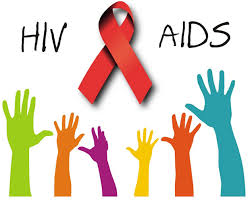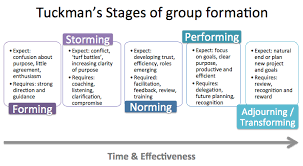
Mental health is a social issue
Order Instructions:
Length: 2500 words (excluding references and cover page)
Task: Students should write a 2500-word essay on the following topics:
1) Analyse the statement, ‘ Mental illness is a social problem’ . To examine this question draw on one or two of the concepts of class, poverty, ethnicity, gender or race.
Preparation: Students should read widely prior to completing the essay. This includes all required readings but they should move beyond these to include some other sources. A bibliography is available on Learnline to help you with this process. For any essay of this length you will need to include 9-11 references. Majority of the references (7-9) should be based on journal articles, books, book chapters and peer reviewed papers. You can use websites but citations from Wikipedia are unacceptable.
SAMPLE ANSWER
Mental health is a social issue
Mental problems affect the way a person thinks and behave. There are many types of mental health disorders including depression- this mental disorder is associated with mood swings, this makes people feel hopeless, exhausted and unmotivated. This can also lower the person’s self-esteem. Lowering their appetite and the low spirits lowers the person’s daily activities and may sometimes affect the people’s physical health. In some cases, these diseases can be life threatening and could make the person feel suicidal. Anxiety is another form of mental disorders; which is described by unrealistic concerns about the various aspects of life. The clinical manifestations are comparable to the depression. Other forms of social disorders include obsessive compulsive disorder (OCD), phobias, binge eating, bipolar disorders and schizophrenia (Bird Et al., 2013).
The main causes for mental disorders are childhood abuse such as trauma, neglect and violence. Other causes include; poor socioeconomic background such as homelessness, unemployment, genetic factors and physical causes such as head injury. Other medical issues include issues such as brain tumors could result to mental illness. This could also lead to social isolation due to discrimination. There exist different theories that describe the psychotic experiences including biochemical experiences, genetic factors, anatomical theories on the brain structure and environmental theories. Regardless of the causative agent for mental illness, mental health is public health threatening factor that must be addressed. To ensure that the issue is addressed, it is important to explore the concepts that make mental illness a public health and social concern. These concepts include ethnicity, gender and poverty (Wang Et al., 2013).
Despite the fact that a society draws its strength from its cultural diversity, racial, ethnic disparities and poverty has contributed to disparities across all the sectors, hitting hard the health sector. Ethnic minorities have been associated with the highest burden of mental health, which further affects the population growth as well as the society’s productivity. According to World Health Organization, the mental disorder is among the leading cause of disability in the world. The study also reported that 33% of people with disability cite mental disorder as the factor that contributed to their disability (Mental Health across Cultures, 2010). The main reason why social minorities suffer most from mental disorder includes the limited accessibility to quality mental care. This implies that the actual prevalence rate of mental disorder is that is equal to other major ethnic communities, the reduced utilization of mental health resource as well as poor quality of care implies that the ethnic minority have their healthcare demands inadequately provided. Statistics indicate that these minority groups are overrepresented in the society’s most vulnerable population including the incarcerated people and the homeless; and often present higher rates of mental illness as compared to the rest part of the population (Hinojosa, Knapp & Woodworth, 2014).
The greater disability and mental disorder among the ethnic minorities is an issue of concern to the public health because it contributes to reduced opportunities for the society to prosper. The factors that are attributed to reduced economic growth due to poor mental health includes; an increased cost of care, increased bias, fragmentation of the services as well as the societal stigmatization (Ocasio Et al., 2014). Other factors include reduced awareness to cultural issues by healthcare providers, language barriers and society’s fear and mistrust to the scope of healthcare. The cumulative weights of the aforementioned barriers are the main reason for mental healthcare disparities among the ethnic group. These factors contribute to broad day discrimination and stigmatization which affects the population even more. Existing data indicates that mental illness is a global burden. It is associated with burden of increased mortality rates and disabilities in the society. Despite the trend, mental disorders are ranked among the most under diagnosed disorder. Patients also are reluctant to open up to the professional care (Anakwenze & Zuberi, 2013).
Statistics indicates that 2 out of 5 people have mood anxiety and have psychological problems. One of the factors contributing to the widespread of this public health challenge is gender. Arguably, gender is an important determinant of health, especially mental health. This is because it influences various aspects of the society including; the socioeconomic position, society roles, status and ranks; which further affects the rates of accessing treatments. Therefore, gender is an important parameter which can be used to define either the susceptibility or exposure to mental health risks and illness (Goodman Et al., 2015). To understand the exact impact of mental illness in the society, it is important for a society to evaluate the concept of gender discrimination associated with gender based violence. This will facilitate the works of human rights in establishing aspects that requires justice to be readdressed, because it is these injustices which results to poor health and poor economic growth. Research indicates that most of the negative experiences and negative exposures of women increases gender based discrimination; leading to psychological disorders to predominates in women more than men. There has been an escalation of human-trafficking, particularly the women for sexual exploitation. This is a heinous human rights violation and is associated with multiple mental healthcare consequences (Verhulp Et al., 2013).
However, healthcare disparities for severe mental complication such as bipolar disease are inconsistent with findings of mental disparities and gender differences. The disparity is high in low prevalence mental disorders such as anxiety and depression. The general population analysis indicates that depression contributed the global burden of the mental health disease encountered in human health. Depression is experienced two folds higher in women than in men; and is projected to be the leading global health disease by 2020. There is overrepresentation of women in this healthcare disease, and it is ranked as the most contributing factor for disability in this age bracket. This is also characterized with high suicidal rates (Gagna, Vasiliadis & Praville, 2014).
It has been suggested that the development of cognitive function in women depends on the evolution of self-identity (self) and the relationship or interaction between her and the surroundings; and the understanding of truth and mind. A stable mentality requires developing equilibrium interdependence throughout their lives. Therefore, the nurses need to develop sensitive tools when evaluating women’s mental health, one which incorporates issues that seem to affect women and their experiences. The healthcare disparities affect women, in turn their productivity is lowered and in some cases, women could lose their employment. As a result, the society bears the burden of taking care for the family, her children and other basic needs. This becomes the society burden, thus it is important for the public health to identify and implement interventions which will reduce the prevalence of the disease. Clearly, mental illness is a society issue (Wang Et al., 2013).
The healthcare disparities are also associated with the social class. The growing amount of research indicated that there is a link between mental health and poverty. People in the society with low incomes suffer more likely to succumb to mental illness. This is associated with inability to afford the clinical services or to manage the psychological disorder early enough. These people are more likely to experience poverty due to fall in financial care and social position because when the person is unwell, it becomes more difficult for the person to get higher education qualifications (Angantyr Et al., 2015). Additionally, it also gets difficult to get a job due to the heavy stigmatization that exists in the society. Research indicates the increased reluctance for employers to employ people with the history of mental illness or due to disability. This is because they argue that it is more difficult for such people to hold down a job, because they are unpredictable and require more time to concentrate on treatment than they need for getting their jobs done. Employers fear this unreliability concept (Mental Health across Cultures, 2010).
A study conducted on mentally ill people and how they manage their finances indicated that the major concern for mentally challenged individuals is how they live their daily lives. The source for personal finance is the major problem and the main source of distress. One of every three mentally ill person is more likely to be in debts. This also affects the young people from a poor economic background. Study indicated that children from such families are more likely to suffer from Attention deficit hyperactivity disorder (ADHD), self-harming behavior and autism diseases. This is attributable to poor general health events due to emotional distress (Angantyr Et al., 2015). Half of the diagnosed mental health complications are for children who are under 14 years, this implies that children to suffer from mental disorder, particularly if they face traumatic events or live in environments with mental stressors. According to world health organization, poverty is the most ruthless cause of suffering for mankind on earth. This is because poverty is multidimensional as it encompasses a person’s ability to satisfy basic needs, reduced control over resources, poor education and also poor health (Botswick Et al., 2013).
Poverty is identified as the intrinsic factor which impact development and sustenance of psychiatric, emotional and behavioral health of a person directly or indirectly. This indicates that poverty implication into mental illness is immense and it is important to distinguish between the different levels of poverty and how they differently impact mental health of individuals in the society. To start with, the gap between the rich and the poor is widening at an alarming rate. Poverty and social inequality is affecting the society’s physical well-being and mental capacity of individuals in the society. This is because poverty is the main source of psychosocial distress which results to mental health deterioration and increased rates for suicides. People who dwell in these underprivileged community experience poor health because their healthcare infrastructure are underdeveloped; this causes stress and frustrations which could result to disruption of the society due to increased rates of homicide, violence and gender based violence (Angantyr Et al., 2015).
Research indicates that the main cause of mental health complications among the poor is that these people live in environments that possess high level of threatening environmental conditions. For instance, the individuals could be working in unrewarding environments such as depersonalizing work, unrewarding environments and or live in environments that lacks adequate amenities to support their mental health treatment. The exposure to more stressors of life, the increased adoption of maladaptive behavior and the increased vulnerability results to long-term health problems such as increased mental disorders and increased mortality rates(Wang Et al., 2013). Stigmatization is very rampant among people with mental illness, particularly in developed countries. The increased social rejection and discrimination associated with it make it even more difficult for these people to integrate in the society. Yet, mental health complication is continuing to thrive in the society. Statistics indicates that about one in every seventeen Americans suffer from mental illness. The mental health condition is particularly affecting the young generation, and most of them are not accessing care they need. Healthcare systems have made great steps in the management of the healthcare; but towards a wrong direction. Mental health care is still underfunded and this is only continuing to put the populations to more risks (Gagna, Vasiliadis & Praville, 2014).
Mental illness strikes to all members of a population regardless of class, religion or culture. However, the magnitude of the problem is only felt most in the underprivileged community. This is attributable to the reduced access to affordable mental healthcare because most of the individuals are uninsured. Although hidden, mental healthcare economic toll is huge on the economic system. The U.S. spends over $100 billion taxpayer’s money to manage the disease, which excludes the economic costs due to reduced productivity. In this case, the government should explore other strategies which could minimize social challenges such as funding more local clinics and hospitals to ensure that mental health care is accessible even among the underprivileged in the society. Schools should hire even more psychologist to help the deal with the children facing traumatic events or are those who are from family backgrounds with parents suffering from mental illness (Mental Health across Cultures, 2010).
Evidently, the determinants of mental health are multiple including biological, psychological and social factors. From the analysis, the underlying concept that contributes to mental illness is the limited access to proper mental health care. The ethnic disparities, gender disparities and poverty issues escalate mental illness; because the society lacks the appropriate structure and framework to ensure that each member of the society can access adequate and quality care. To protect and promote mental health requires interventions which addresses these determinants effectively, there needs a multifactorial approach to manage the social issue and public health concerns. These include all actions which facilitate the establishments of environments which supports the mental health of individuals so that they can adopt and sustain new healthy lifestyles. It is important to establish a climate that facilitates and protects the political and civil society. The society should establish a climate that is culturally competent and upholds the social economic rights to protect the society (Brittian Et al., 2013).
The policies that are endorsed should not only address the issue of mental illness but should also focus on the other elements that promote mental health include raising the economic status of the underprivileged community. It is also important to involve other sectors such as the education, labor, transport, environment and welfare. Specific mental health interventions include early childhood interventions such as involving the society in psychosocial activities to help the underprivileged persons in the society. It is important to support the children through skills building programs and youth based programs to keep the young minds occupied so that they do not succumb to unhealthy behaviors such as violence. The socio economic empowerments could be achieved through microcredit schemes (Gagna, Vasiliadis & Praville, 2014). This is important because it will empower women into accessing and fighting for their rights such as the reduction of gender based violence, increased access to girl child education, hence reducing the gender based health disparities. The government should also establish programs that are specific and targets vulnerable groups such as the indigenous people, minorities and also the immigrants. Violence prevention programs, housing policies, community development programs, antidiscrimination campaigns and the promotion of rights and opportunities are other important aspects that can be used to support the society and to eradicate mental disorders (Mental Health across Cultures, 2010).
References
Anakwenze, U., & Zuberi, D. (2013). Mental Health and Poverty in the Inner City. Health & Social Work, 38(3), 147-157. doi:10.1093/hsw/hlt013
Angantyr, K., Rimner, A., Nordan, T., & Norlander, T. (2015). Primary Care Behavioral Health Model: Perspectives of Outcome, Client Satisfaction, and Gender. Social Behavior And Personality: An International Journal, 43(2), 287-301. doi:10.2224/sbp.2015.43.2.287
Bird, P., Campbell-Hall, V., Kakuma, R., & the MHaPP Research Programme Consor,. (2013). Cross-national qualitative research: the development and application of an analytic framework in the Mental Health and Poverty Project. International Journal Of Social Research Methodology, 16(4), 337-349. doi:10.1080/13645579.2012.709802
Bostwick, W., Meyer, I., Aranda, F., Russell, S., Hughes, T., Birkett, M., & Mustanski, B. (2014). Mental Health and Suicidality Among Racially/Ethnically Diverse Sexual Minority Youths. Am J Public Health, 104(6), 1129-1136. doi:10.2105/ajph.2013.301749
Brittian, A., Umaa-Taylor, A., Lee, R., Zamboanga, B., Kim, S., & Weisskirch, R. et al. (2013). The Moderating Role of Centrality on Associations Between Ethnic Identity Affirmation and Ethnic Minority College Students’ Mental Health. Journal Of American College Health, 61(3), 133-140. doi:10.1080/07448481.2013.773904
Gagna, S., Vasiliadis, H., & Praville, M. (2014). Gender differences in general and specialty outpatient mental health service use for depression. BMC Psychiatry, 14(1), 135. doi:10.1186/1471-244x-14-135
Goodman, L., Pugach, M., Skolnik, A., & Smith, L. (2012). Poverty and Mental Health Practice: Within and Beyond the 50-Minute Hour. J. Clin. Psychol., 69(2), 182-190. doi:10.1002/jclp.21957
Hinojosa, M., Knapp, C., & Woodworth, L. (2014). Family Strain Among White and Latino Parents of Children with Mental and Behavioral Health Disorders. J Child Fam Stud, 24(6), 1575-1581. doi:10.1007/s10826-014-9961-0
Mental Health across Cultures – A Practical Guide for Health Professionals. (2010). Journal Of Psychiatric And Mental Health Nursing, 17(1), 95-95. doi:10.1111/j.1365-2850.2009.01503.x
Ocasio, K., Van Alst, D., Koivunen, J., Huang, C., & Allegra, C. (2014). Promoting Preschool Mental Health: Results of a 3Â Year Primary Prevention Strategy. J Child Fam Stud, 24(6), 1800-1808. https://www.doi:10.1007/s10826-014-9983-7
Verhulp, E., Stevens, G., van de Schoot, R., & Vollebergh, W. (2013). Understanding ethnic differences in mental health service use for adolescents’ internalizing problems: the role of emotional problem identification. European Child & Adolescent Psychiatry, 22(7), 413-421. https://www.doi:10.1007/s00787-013-0380-3
Wang, Y., Johnson, J., Shu, B., & Li, S. (2013). Towards the development of a gender-sensitive measure of women’s mental health. J Clin Nurs, 23(9-10), 1227-1234. https://www.doi:10.1111/jocn12346
We can write this or a similar paper for you! Simply fill the order form!












